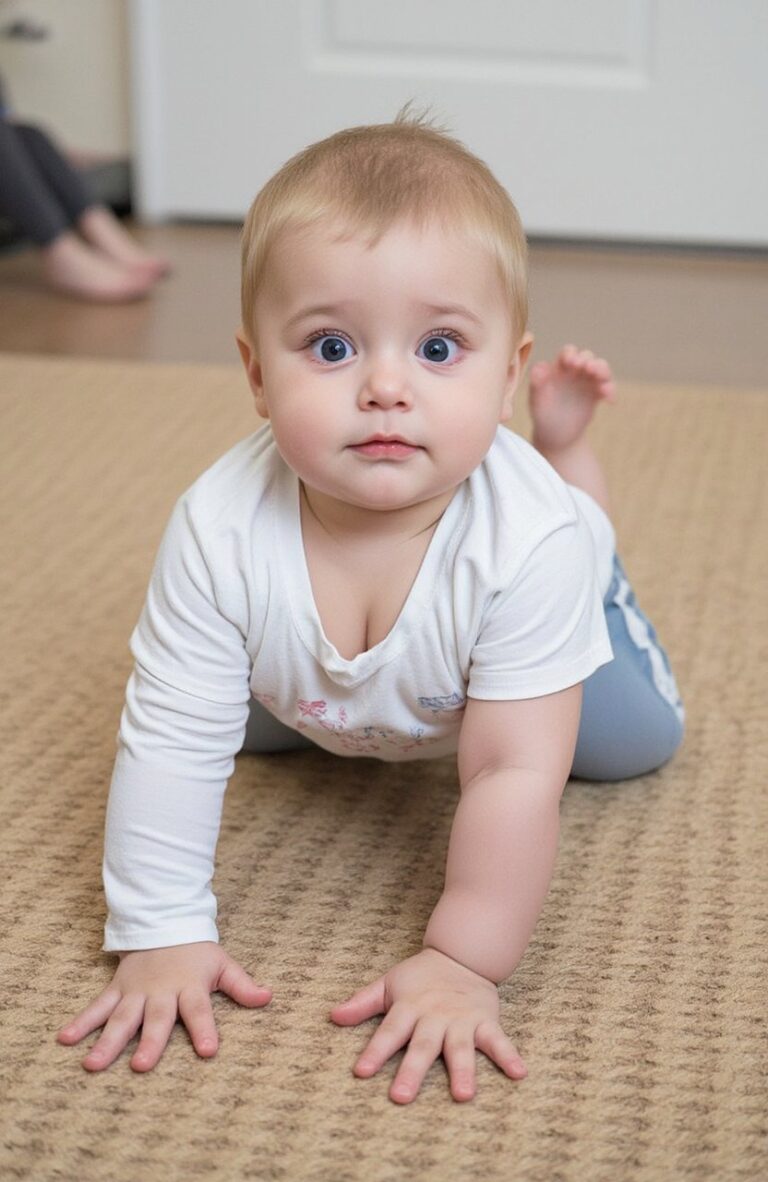Around two to three months old, babies start to see some colors. Initially, they see mainly black, white, and gray, but as their vision develops, they begin to detect red and green. By six months, most infants can enjoy a full spectrum of colors. This journey is influenced by their environment and experiences. High-contrast images and colorful settings help boost their visual skills. If you’re curious about specific milestones and ways to encourage this growth, keep exploring!
Key Takeaways
- Newborns primarily see in black, white, and gray for the first two weeks of life.
- By 2-3 months, babies begin to distinguish between red and green colors.
- Most infants can perceive a full spectrum of colors by six months.
- High-contrast visuals and colorful environments support early color vision development.
- Genetic factors and environmental stimuli influence the timing and vibrancy of color recognition.
Color Perception in Newborns
When we think about how newborns perceive color, it’s fascinating to realize that their vision is quite different from ours. Newborns have what we call dichromatic vision, meaning they see colors less vividly than adults. Their ability to discriminate between colors is limited, especially in shorter wavelengths, which makes distinguishing shades challenging.
- They can recognize broad-band orange but struggle with yellow-green.
- The neural pathways for color vision exist but aren’t fully developed yet.
As parents and caregivers, it’s important to know that significant growth in color perception happens in those first few months. By understanding these early stages, we can support our little ones as their world becomes more colorful and vibrant.
The Journey to Color Detection

As our little ones begin their journey to color detection, it’s essential to understand the fascinating process that unfolds in their developing eyes. In the early weeks, they primarily see black, white, and gray, focusing on high-contrast patterns. As they grow, their neural pathways strengthen, and by six months, most babies can perceive a full spectrum of colors—a significant milestone in their color evolution.
To support this development:
- Introduce toys and books with vibrant colors.
- Engage them with high-contrast visuals to enhance early visual skills.
- Regularly expose them to colorful environments.
These interactions not only stimulate their visual growth but also help refine their color perception as cone cells mature, leading to more nuanced recognition of colors.
Milestones in Color Vision Development
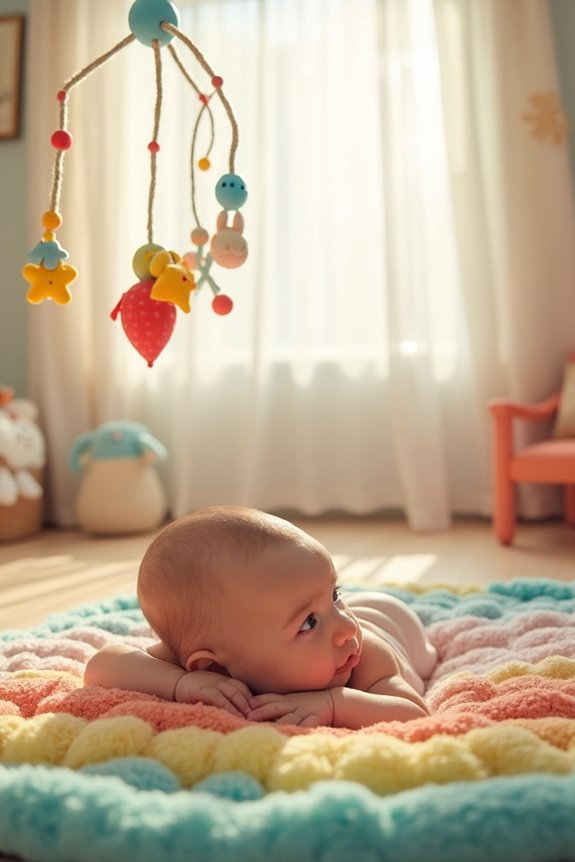
Understanding the milestones in color vision development can be both exciting and enlightening for us as parents. Here’s what to expect:
- Neonatal Stage (0-2 weeks): Newborns see primarily in black, white, and gray.
- Early Color Detection (2-3 months): Babies begin to distinguish red and green as their cone cells mature.
- Full Color Vision (by 6 months): By this age, they can see a full spectrum of colors.
To support this development, providing high-contrast visual stimuli, like black and white patterns, can be beneficial. Monitoring these milestones helps us ensure our little ones are developing their color vision properly. If you notice any delays, consulting a pediatrician or optometrist can be a great next step, giving us peace of mind as we nurture our child’s growth.
The Role of Eye Development
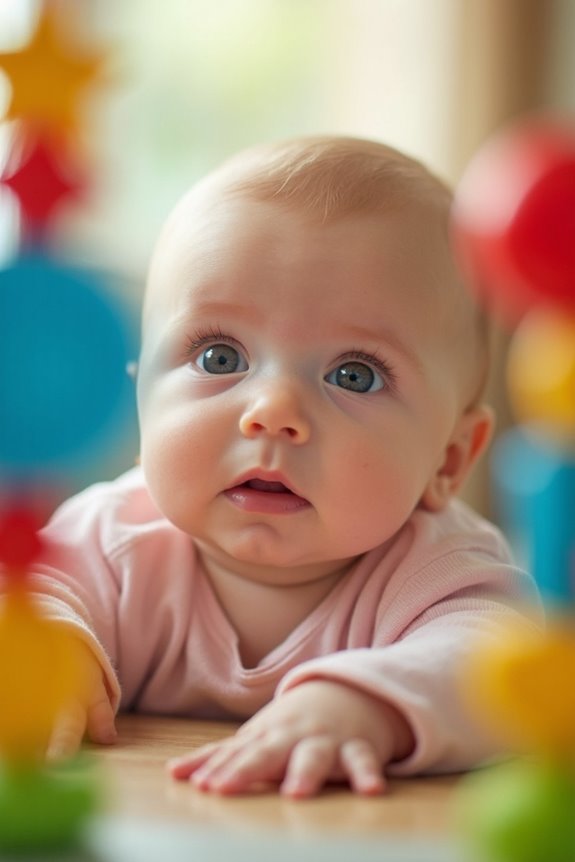
Eye development plays a crucial role in how our babies perceive the world around them. In those early weeks, we notice that their eye maturity is still forming. At birth, their vision is quite blurry, limiting their ability to focus beyond 8-10 inches.
As we watch, their pupils gradually widen, allowing for improved light intake, which enhances visual acuity.
Key milestones include:
- First few weeks: Sensitivity to light and shapes emerges.
- By one month: They start focusing on faces.
- At three months: Eye coordination improves, enabling tracking of moving objects.
These developments are vital for our little ones, as they adapt to their environment, paving the way for recognizing colors and details as their vision continues to evolve.
Factors Influencing Color Perception
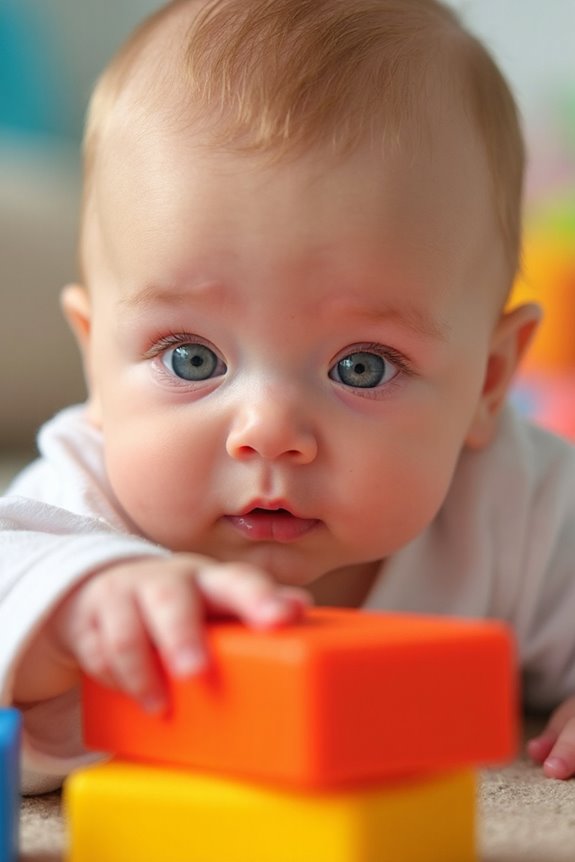
While watching our little ones grow, it’s fascinating to see how their ability to perceive colors develops. Several factors play a role in shaping this journey:
- Genetic Factors: Each baby has a unique genetic makeup, influencing when they recognize colors. Some may see vibrant hues earlier than others, affecting how vividly they experience colors.
- Environmental Stimuli: The world around them matters too! Bold, high-contrast colors and natural light can enhance their color visibility. Creating colorful environments helps stimulate their curiosity and supports motor skill development.
Encouraging Color Vision Development
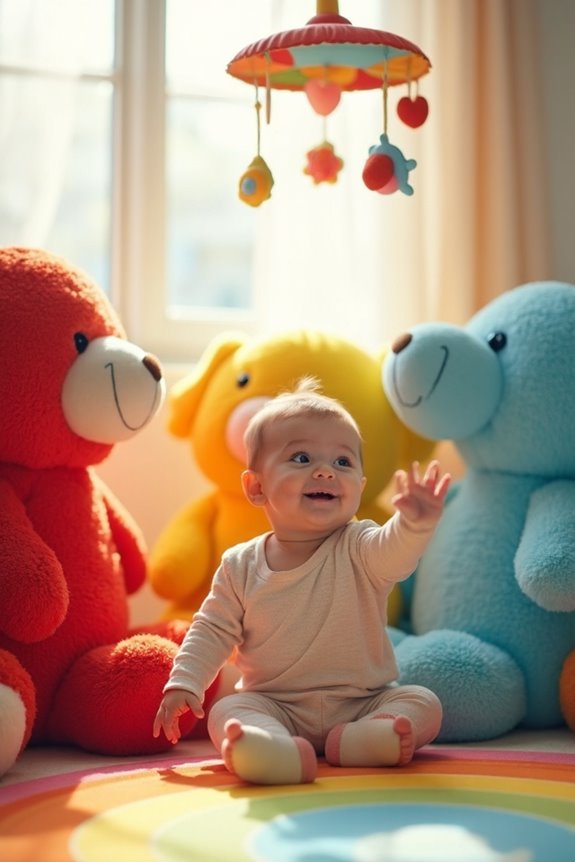
As we embark on the journey of encouraging our little ones’ color vision development, it’s essential to recognize that every interaction counts. Creating colorful environments can significantly enhance their visual exploration. Here are some ways to support this growth:
- Colorful Toys: Choose toys with various colors to help them learn to distinguish between hues.
- Interactive Play: Engage in games that involve color recognition, stimulating their neural pathways.
- Reading Colorful Books: Share vibrant stories that captivate their attention and enhance perception.
- Outdoor Activities: Spend time in nature, exposing them to a diverse range of colors.
- High-Contrast Patterns: Incorporate high-contrast toys and visuals to attract their gaze.
With these simple steps, we can nurture our babies’ color vision development together.
Monitoring and Supporting Development
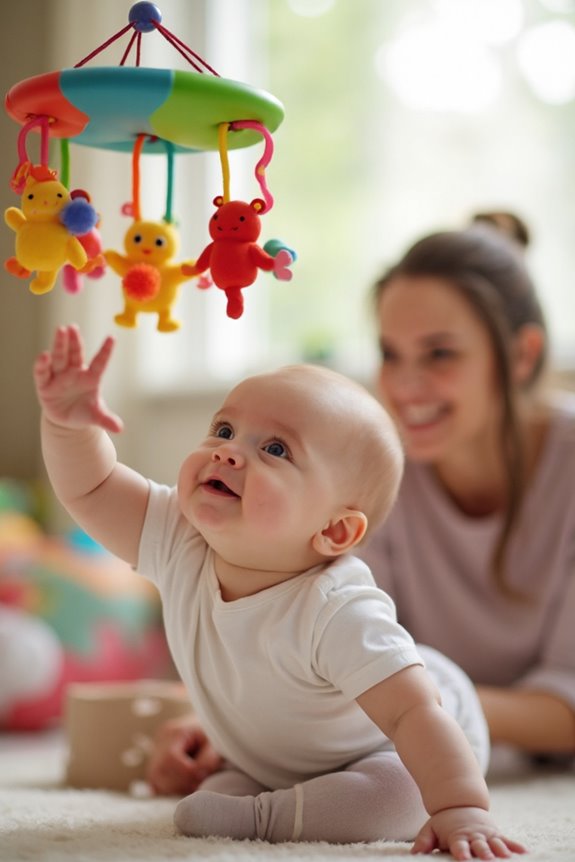
Monitoring and supporting our babies’ vision development is crucial, especially since their visual capabilities evolve rapidly in the first year. To ensure healthy eye health, let’s keep an eye on milestones. Babies begin distinguishing colors by three months, and by six months, they see a full spectrum. Regular eye check-ups with pediatricians help us catch any potential issues early.
We can also foster visual stimulation by creating engaging environments. Consider using high-contrast toys and colorful books to enhance their experience. Limiting screen time is vital, too, as we want to protect their developing vision. A balanced diet rich in omega-3 fatty acids can further support eye health. Together, we can nurture their visual development and create a bright world for them to explore.
Frequently Asked Questions
Do All Babies Develop Color Vision at the Same Rate?
Not all babies develop color vision at the same rate. Individual differences and environmental factors play significant roles. Let’s embrace our little ones’ unique journeys, celebrating each milestone as they discover the colorful world around them together.
Can Premature Babies Have Delayed Color Vision Development?
Absolutely, we understand that premature birth can lead to delayed color perception. It’s essential we monitor these little ones closely, as their development may require extra attention and support to catch up with their peers.
Are There Any Conditions That Affect Color Vision in Infants?
We understand that color vision in infants can be influenced by genetic factors, leading to conditions like color blindness. It’s essential to monitor their development, ensuring early detection and support to aid their visual journey.
How Can I Tell if My Baby Sees Colors Correctly?
As we watch our baby’s eyes light up at vibrant toys, we realize color perception is blossoming. Noticing their reactions and visual cues helps us understand their growing world and how they see colors correctly.
What Colors Are Best for Stimulating My Baby’s Vision?
When it comes to stimulating our baby’s vision, we find high contrast colors and vibrant shades work wonders. These bold hues not only capture their attention but also support their visual development beautifully.





